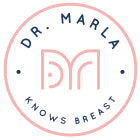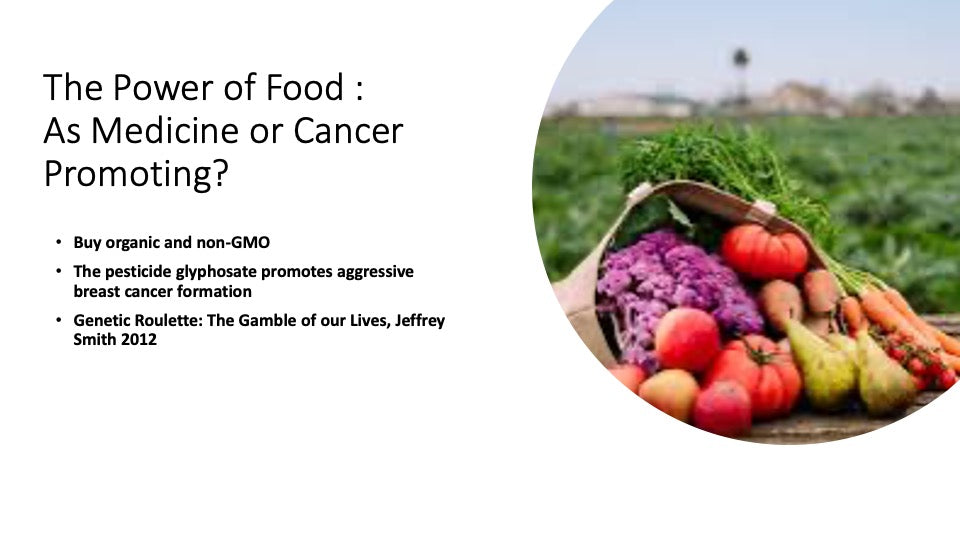Sugar and Cancer

Bulletpoints
1.Research shows excess sugar consumption in the form of added, processed, and refined sugar increases the risk of cancer.
2.Added sugar is hiding in 74% of packaged foods
3.Added fructose is one of the most dangerous foods. Don’t confuse added fructose with natural fructose found in fruit
Sugar and Cancer
Research shows excess sugar consumption in the form of added, processed, and refined sugar increases the risk of cancer.
The increased risk in cancer related to sugar consumption is multifactorial:
Increased body inflammation/High glycemic index
Increased circulating IGF
Obesity
Added sugar may be one of the most dangerous substances to our health that we consume.
Added sugar is hiding in 74% of packaged foods and Americans’ consume an average of about 57 pounds (128 cups) per year!
Most of added sugar is hidden within processed foods and manufactures use sugars with many different names, so people don't even realize they're eating it.
Sugar is addictive, acting through the same reward center, dopamine, as cocaine and other highly addictive substances.
Food scientists have perfected processed food to satisfy taste, texture, and smell that no natural foods can match. We also get addicted to these features of processed food.
Energy Metabolism:
- All the cells in our body use glucose as the primary source of energy. Table sugar is a combination of glucose and fructose.
- There are different pathways of processing or metabolizing the sugar we eat to produce energy and there are alternative pathways of energy metabolism that do not involve sugar, primarily ketosis.
- Cancer cells use glucose as their primary energy source. The preferential use of glucose metabolism by cancer cells is termed, the Warburg effect, discovered by scientist, Dr. Otto Warburg. In the 1920s, Dr. Warburg noted that many cancer cells primarily rely on glycolysis, a different energy metabolism pathway of sugar instead of the primary pathway that our bodies prefer called mitochondrial oxidative phosphorylation. Our bodies can use glycolysis, but it is not the preferred pathway because, though faster, it is less efficient and produces less energy per glucose molecule. Given that many cancers preferentially prefer glycolysis, it would seem logical then that you could starve cancer cells by not consuming sugar or “glucose”. Unfortunately, this theory has not turned out to be the sought-after panacea for cancer.
- Increased cancer risk
Research shows excess sugar consumption in the form of added, processed, and refined sugar processed food increases the risk of cancer. The cells in our body depend on sugar to survive and function, and consuming sugar in natural whole, non-processed food does not preferentially feed cancer cells. Sugar, such as fructose, found in fresh fruit is not equivalent to added fructose to food. There's no reason to avoid the sugar that is naturally present in whole foods.
- Research suggests that Every 10 percent dietary increase in packaged snacks, fizzy drinks, sugary cereals and other highly processed foods increases the risk for breast cancer by 12 percent. In one large prospective study sugary drinks were associated with an 18% increased risk of cancer and a 22% risk of breast cancer. 100% fruit juice was associated with overall increased cancer risk of 12%. The association between sugary drinks and cancer may be partly explained by the association of sugar consumption and obesity and therefore the association of obesity and cancer. But there is evidence that it is the visceral fat deposit specifically associated with the high glycemic index of sugary drinks independent of body weight. Visceral fat deposit is shown to cause increase in adipokine secretion and promote cell signaling pathways.
- Elevated blood sugar/High glycemic index
- link between excess sugar levels and cancer. It's well known that people with type II diabetes have an increased risk of several cancers.2 It's also been shown that an elevated blood sugar level may contribute to the formation of cancer cells (oncogenesis), resistance to cell death in cancer cells (apoptosis resistance) and tumors becoming resistant to chemotherapy.
High Glycemic index (GI), not just obesity, has also been shown to be associated with cancer.
Long-term consumption of a high GI/GL(glycemic load) diet results in chronically high blood glucose, and hence, to chronically elevated insulin concentration. Insulin increases bioactive IGF-1, which promote cancer development by inhibiting apoptosis and stimulating cell proliferation [8,9].high glycemic load is associated with systemic inflammation and increased pro inflammatory markers such as c-reactive protein. Systemic inflammation supports cancer formation
- High GI foods, which are characteristically highly refined carbohydrates and/or carbohydrates with little fiber, are one of the major dietary factors affecting inflammation [22] There are many other forms of sugar, ranging from simple sugar to more complex sugars (simple or complex carbohydrates). Simple sugars do not require much breakdown by our bodies and are more readily absorbed leading to a high glycemic index.
Elevated Insulin like growth factor
- One connection of sugar and cancer is indirect through increased insulin like growth factor-1 (IGF1),
- Increased IGF-I has direct effects on the hallmarks of cancer. The final pathway from increased sugar consumption is high circulating levels of IGF1.
- IGF1 is involved in cell proliferation, differentiation, and survival through glucose transfer and energy metabolism.
- IGF is also involved in apoptosis resistance, cancer development, migration, and invasion.
- Over consumption of refined sugar can lead to insulin resistance which has been linked to cancer formation due to resultant increased IGF-I levels. Diabetics are known to have increased overall risk of cancer development.
- Over consumption of sucrose and fructose in a highly processed diet has been shown to accelerate cancer development, and even cancer treating drug resistance.

Obestiy
High added sugar consumption is linked to obesity, and obesity is linked to cancer. Obesity alters hormone levels in the body which are associated with a greater risk of both developing cancer and having cancer recur or progress.
- obesity-directly related to cancer causation in 12 cancers. Research shows obesity is directly related to cancers of the breast, colon, endometrium (uterus), esophagus, gall bladder, kidney, liver, mouth/pharynx/larynx, ovary, pancreas, prostate, and stomach
Added Sugar
Try to avoid processed and refined foods. Beware that even “healthy” foods, especially low fat foods, can be high in sugar. Added sugar is not just found in desserts, but in breads, salad dressings, and pasta sauces. Our tongues are used to sugar and food can tend to not taste good without it.
With as many as 11 teaspoons (46.2 grams) of added sugar in some 12-oz. sodas, a single serving exceeds the AHA recommendation for men and is about twice the allowance for women and children.
- One leading brand of yogurt contains 7 teaspoons (29 grams) of sugar per serving.
- A breakfast bar made with "real fruit" and "whole grains" lists 15 grams of sugar.
- A single cup of bran cereal with raisins, in a box advertising "no high-fructose corn syrup," contains 20 grams of sugar per serving.
- A cranberry/pomegranate juice product, also advertising "no high-fructose corn syrup" and "100% Vitamin C," contains 30 grams of added sugar per 8 oz. serving.
Added fructose is one of the most dangerous foods. It is highly concentrated, processed and is readily absorbed and metabolized by the liver. High fructose corn syrup (HFCS) is a highly processed sweetner, consisting of both glucose and fructose. Two forms are
- HFCS 55: This is the most common type of HFCS. It contains 55% fructose and 45% glucose, which makes it similar to sucrose in composition.
- HFCS 90: This form contains 90% fructose.
is especially toxic and is responsible for the majority of diet related liver disease. In addition, HFCS causes disruptions in the intestinal lining, allowing for toxic byproducts and partially digested proteins to enter our blood stream and contribute to chronic body inflammation that is related to cancer formation and other diseases such as heart disease, dementia, accelerated aging and more. Added fructose is a special concern because it is primarily metabolized in the liver Fructose goes right to the liver and triggers lipogenesis (the production of fats like triglycerides and cholesterol) and is one of the main causes of fatty liver disease, insulin resistance, type 2 diabetes and more.
High-fructose corn syrup is found in many foods, especially in the US. These include soda, breads, cookies, candy, ice cream, cakes, cereal bars and many others.
BOTTOM LINE: High-fructose corn syrup is produced from corn starch. It consists of varying amounts of fructose and glucose, but the most common type contains 55% fructose and 45% glucose.
Agave nectar or syrup is produced from the agave plant. It contains 70–90% fructose and 10–30% glucose. It may be even more harmful for health than regular sugar.
- Naturally occurring fructose in fruit is part of a complex of nutrients and fiber that doesn’t exhibit the same biological effects as the free high fructose doses found in “corn sugar”. Although eating any extra sugar should be avoided, it is especially important to minimize your intake of added sugars that are high in added fructose. Fruit offers fiber and nutritional nutrients that are directly anti-cancer, which outweighs any negative of the natural fructose in the fruit. Fruit is a great healthy way to satisfy one’s sweet tooth. Fruit, vegetables and naturally contain small amounts of sugar, but they also contain fiber, nutrients and various beneficial compounds.
- Agave syrup is a highly processed sweetner that contains high levels of fructose-even more than HFCS. The benefits of natural agave nectar (minerals, vitamins, and fiber) are lost during the processing. The reason agave ranks relatively low on the glycemic index is because it has a high content of fructose. Fructose does not readily raise blood sugar (glucose) levels because the body doesn’t metabolize it well. New research suggests that excessive fructose consumption deranges liver function and promotes obesity. The less added fructose you consume, the better.
The U.S. Food and Drug Administration (FDA) requires food producers to list all ingredients in their foods. But added sugar comes in many forms – which is why it's so hard to find on the ingredients label.2
There are at least 61 different names for sugar listed on food labels.
While product labels list total sugar content, manufacturers are not required to say whether that total includes added sugar, which makes it difficult to know how much of the total comes from added sugar and how much is naturally occurring in ingredients such as fruit or milk. That makes it very difficult to account for how much added sugar we're consuming.2,3
however, if you decide to buy packaged foods, be on the lookout for the many different names that sugar goes by.
Learn to read food ingredient lists.
Don’t be fooled by molasses. Molasses, though contains some vitamins and minerals, is a high concentrated form of processed sugar. Cane sugar would be better than molasses.
Names for sugars without the word sugar on labels are:


